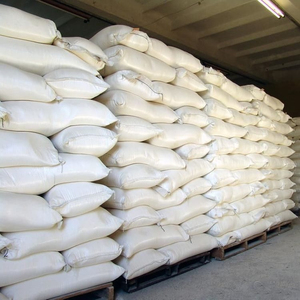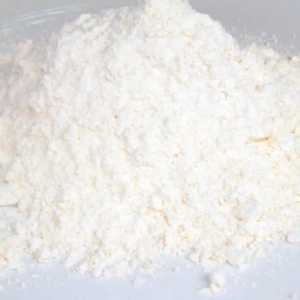(4926 products available)



































































































































































Soft wheat:
It mainly grows in the upper Midwest and Northeast. Additionally, it is notable for its weak gluten content, and therefore, it can produce flour suitable for cakes, cookies, biscuits, and other products. Business buyers usually purchase soft wheat for further processing into specific flour types.
Durum wheat:
This type of wheat contains the highest protein and gluten levels among various wheats. Its gluten is strong, stretchy, and firm, which can give pasta good structure and keep its shape when cooked. Furthermore, durum wheat not only has high protein content and strong gluten but also contains abundant carotenoids, which can give pasta an attractive golden hue. Therefore, durum wheat is the main grain for producing semolina flour used in pasta, couscous, and some types of bread and pizzas.
Red hard wheat:
It is the primary wheat grain used in bread products. Red winter wheat is planted in the autumn and harvested in the summer, and Red spring wheat is planted in the spring and also harvested in the summer. Hard red wheat has a higher protein content than soft red wheat, giving it stronger gluten, and therefore, it can be processed into flour suitable for various kinds of bread, pizza, and pastries.
White wheat:
Compared with red hard wheat, white wheat has the same gluten strength and protein content, but the color is different. White wheat has a milder flavor and finer texture. Furthermore, compared with hard red wheat, white wheat is more suitable for producing whole wheat flour because its whole wheat flour is lighter in color.
Wheat production area:
The main wheat-producing areas in the world are the northern states of the United States, Canada, Europe, China, and India. Different regions produce different varieties due to climate and soil conditions.
Wheat variety:
There are many varieties of wheat, mainly divided into two categories: hard and soft. Hard wheat has more protein and gluten, making it suitable for making bread and pasta. Soft wheat has lower protein content and is more suitable for baking cakes and cookies.
Harvest time:
Wheat is usually harvested in summer and fall. Early-maturing varieties may be harvested as early as June, while late-maturing varieties are harvested in August and September.
Harvest method:
Wheat is harvested by machine in large quantities, either by wheat harvesters or by wheat harvesters. Harvesting by machines ensures efficiency and accuracy. Some special regions may still use traditional manual harvesting methods.
For more than 12,000 years, farmers around the world have relied on a technique called selective planting to help wheat grow. This farming technique is simple but effective. Each year, farmers gather the wheat that did best the previous year - the strongest, healthiest, and most useful wheat. They save and plant only these wheat strains. Gradually, over many years, the wheat that is best suited to each farm's land, weather, and needs becomes the main crop.
This carefully selective planting helps in two important ways. First, it lets farmers grow wheat that always produces the most food each year. Second, it helps the wheat adapt to different climates and soils across large areas. While many crops need complicated methods to help them grow, wheat just needs the farmer's simple choice to plant the wheat that worked best in their fields. This is an easy but vital way for farmers to ensure their fields will always produce plenty of good wheat each year.
To keep their wheat healthy and allow it to flourish, farmers tend to take care of it throughout the entire growing season. Initially, they make sure that the soil conditions and pH levels are appropriate for the best growth of wheat by testing the soil. Then, they apply fertilizers and amendments accordingly. Moreover, they regularly check the wheat crops for pests or diseases, and at the first signs of trouble, they quickly act to protect the wheat by spraying safe pesticides.
Lastly, when the wheat matures, farmers conduct a careful harvest, making sure to minimize any damage or loss of wheat by using well-maintained harvesting equipment and proper techniques. By paying close attention to each step from soil preparation to harvest, farmers help their wheat fields stay healthy and full of grain.
The understanding of origin wheat usage scenarios is helpful for businesses planning to invest in wheat and wheat-based products or seeking to incorporate it into their supply chain.
The majority of wheat grown and harvested around the world is used primarily for human consumption. Farm to table, wheat has a great many usage scenarios in many industries flowing through a great many hands.
Many animals are agricultural industry partners in the cycle of wheat grown and harvested. Animal feed made from wheat is an essential food source for livestock, horses, and poultry. Livestock includes cattle, cows, horses, and poultry such as chickens and geese, to name a few. They eat little grains of wheat and are very, very happy about it!
Flour is an ingredient in many food products made for consumption. Wheat is the main ingredient in pasta, pizza, and beer. Along with hops and barley, beer is one of the major food and beverage industries that use wheat as an ingredient. Many companies make beer, pasta, and other products related to wheat that are for sale in big box stores, supermarkets, and specialty stores that will purchase the product in large quantities for resale.
Europe is the world's largest producer of pasta. By the time wheat becomes flour, processed and packaged for sale, the wheat has traveled from farm to factory, where it will be ground into flour and packaged.
Historically, wheat was ground into flour using stone mills or water mills in various parts of Europe. The mills would have been business owners who sold the ground flour to bakers and other businesses. Water mills were popular in Europe during the Middle Ages. It is estimated that over two million tons of wheat are used each year to produce pasta and other wheat products, which means a great deal of wheat flour is needed to satisfy this demand.
When studying the wheat market, it is essential to consider what part of the world wheat is most used for flour, what kind of wheat is used for particular products (high-protein wheat is used for pasta), and where it is being sold. The demand for high-quality wheat products continues to increase as the population grows.
Wheat flour is used in the bakery industry to make bread, which is often the single biggest product made with wheat flour. Many countries have a demand for all things baked! Researching regional differences in baking and other uses for wheat flour will help people understand the industry better.
Businesses looking to purchase wheat grain should consider several factors. These include the wheat's protein content, milling yield, flour quality, moisture content, safety standards compliance, origin and crop year, storage and handling facilities, and sampling and testing procedures.
Wheat with varying protein contents is available for sale on most wholesale platforms. Different baked products require specific wheat protein levels. For example, higher-protein bread flour is ideal for making chewy bread, while pastry and cake flour have lower protein levels, making them suitable for tender cakes and pastries. Consider the flour's quality when sourcing wheat for a specific consumable product. Consider wheat that complies with safety standards set by relevant authorities. For instance, the Food Safety and Standards Authority of India (FSSAI) has set guidelines in India regarding the safety wheat must comply with, including stipulations for mycotoxins, aflatoxins, contaminants, and pesticide residues.
Grain buyers are more likely to find premium pricing for quality origin wheat. Quality indicators include the wheat's protein, the presence of smut, the grading of the grain, and the milling yield.Origin wheat's grade and class affect its storage and handling requirements. For instance, it is crucial to store hard red spring origin wheat separately from hard red winter wheat since they tend to blend negatively. Additionally, if any allergy-causing substances like mold or mildew are present, they will likely surpass the thresholds set by regulatory bodies. Such products must be handled and stored appropriately to reduce the likelihood of contamination.
When sourcing wheat, buyers should ask about the sampling and testing procedures used by the supplier. Some suppliers conduct routine sampling and testing, while others do not. Frequent testing is crucial as it aids in discovering issues early. Wheat is usually tested for mycotoxins, moisture content, protein levels, and temperature.
Q1: How much origin wheat is grown each year?
A1: According to the Food and Agricultural Organization (FAO) of the United Nations, around 6.8 billion metric tonnes of origin wheat were produced in 2021. The production for 2022 was estimated to be around 6.5 billion metric tonnes.
Q2: What percentage of wheat is origin wheat?
A2: About 70% of the world's wheat is origin wheat. It is a staple food crop used to make a variety of food products, such as bread, pasta, and pastries.
Q3: What are the top three countries that produce origin wheat?
A3: According to the United States Department of Agriculture (USDA), the top three producers of origin wheat are China, India and Russia. China and India are also the leading consumers of wheat grains.
Q4: What is the total value of the wheat industry globally?
A4: The total value of the wheat industry is estimated to be around $50 billion. It is the most widely grown and third most-produced cereal grain in the world, after maize and rice.